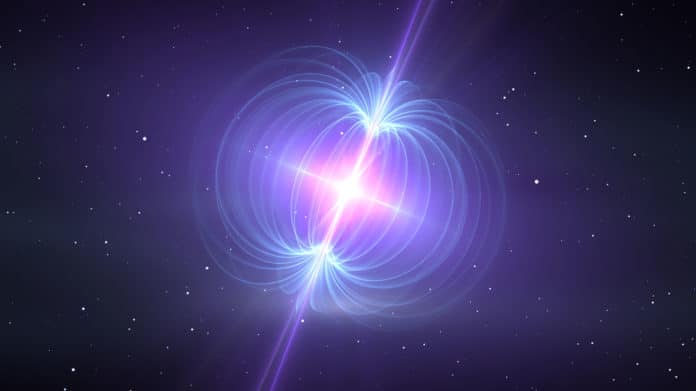Magnetars are highly magnetized young neutron stars that occasionally produce enormous bursts and flares of X-rays and gamma-rays.
Astronomers recently detected one such intense radio burst coming from a galactic magnetar known as SGR 1935+2154.
The magnetar SGR 1935+2154 is located 30,000 light-years away in the Vulpecula constellation. The magnetar is known to exhibit transient radio pulsations.
Recently, it entered a period of unusually intense X-ray burst activity, and almost immediately, a team of astronomers led by Paul Scholz of the University of Toronto, Canada, started to observe this pulsar with CHIME. This resulted in the detection of a two-component bright millisecond radio burst from SGR 1935+2154 on April 28, 2020, similar to FRBs observed at extragalactic distances.
Astronomers said, “The burst was detected simultaneously in 93 of the 1,024 CHIME/FRB formed beams, indicating an extremely bright event.”
The event lasted for 0.585 and 0.355 milliseconds, with the second occurring approximately 0.03 seconds after the first one. The dispersion measure of two burst components was found to be about 332.72 pc/cm3. The fluence of the two sub-bursts was measured to be 480 and 220 kJy ms.
Scientists noted, “Such values, together with the estimated distance to SGR 1935+2154, indicate a 400–800 MHz burst energy at a level of 30 decillion ergs, which is brighter than those of any radio-emitting magnetar known to date.”
“The new radio burst was identified when SGR 1935+2154 was in an extended active phase in which hundreds of high-energy bursts were reported. The burst is by far the most radio-luminous such event detected from any magnetar in the Milky Way galaxy.”
Journal Reference:
- B. C. Andersen, A bright millisecond-duration radio burst from a Galactic magnetar. DOI: arXiv:2005.10324
